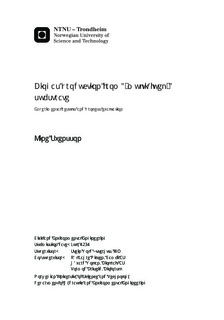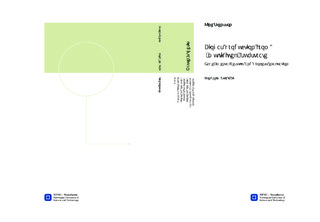| dc.contributor.advisor | Østerhus, Stein Wold | nb_NO |
| dc.contributor.advisor | Nilsen, Pål Jahre | nb_NO |
| dc.contributor.advisor | Wollan, Håvard | nb_NO |
| dc.contributor.advisor | Briseid, Tormod | nb_NO |
| dc.contributor.author | Svensson, Kine | nb_NO |
| dc.date.accessioned | 2014-12-19T12:32:26Z | |
| dc.date.available | 2014-12-19T12:32:26Z | |
| dc.date.created | 2012-11-11 | nb_NO |
| dc.date.issued | 2012 | nb_NO |
| dc.identifier | 567047 | nb_NO |
| dc.identifier | ntnudaim:7788 | nb_NO |
| dc.identifier.uri | http://hdl.handle.net/11250/242343 | |
| dc.description.abstract | A multi fuel biogas plant is under planning at Fiborgtangen, Norway. The plant will utilize biogas from several different sources, including fish silage, animal manures, sludge from the paper factory and straw. In order to make good decisions on how to design the plant, characterization of the substrates in regards to biogas potential and nutrient value was done, and laboratory scale models of a possible plant design was established. The characterization showed that a minimum of 42% of the DM should come from manure in order to meet the micro-nutrient demand, it also showed that some nitrogen rich substrates in addition to the manure needed to be present to avoid nitrogen limitation to balance out the high carbon substrates. A biochemical methane potential study was carried out for all substrates and showed promising results, with the exception of the fiber sludge from the paper factory that had a very poor methane potential. The mixed substrate fed to the reactor models gave a methane yield of 300 mL CH4/gVS in the biochemical methane potential study. A mix of all the substrates was fed to 4 semi continuous reactors with a HRT of 25 days and OLR of 3 gVS/L. The reactors performance was unstable, and operating with high propionic acid concentrations. The specific methane yield ranged from 170-230 mL CH4/gVS, but because the reactors did not reach steady state during the experimental period and the propionic acid concentrations were so high, it is not possible to conclude on what yield this design would give. It is recommended that the semi continuous experiments are continued until they reach steady state or collapse because of the high propionic acid concentrations. After this it would be recommended to start experiments with higher proportions of animal manure and to leave the fiber sludge out of the reactor feed as it is has very low methane and nutrient value. | nb_NO |
| dc.language | eng | nb_NO |
| dc.publisher | Institutt for vann- og miljøteknikk | nb_NO |
| dc.subject | ntnudaim:7788 | no_NO |
| dc.subject | MTBYGG Bygg- og miljøteknikk | no_NO |
| dc.subject | Vannforsynings- og avløpsteknikk | no_NO |
| dc.title | Biogas production from multi-fuel substrate: Experimental results and process evaluation | nb_NO |
| dc.type | Master thesis | nb_NO |
| dc.source.pagenumber | 57 | nb_NO |
| dc.contributor.department | Norges teknisk-naturvitenskapelige universitet, Fakultet for ingeniørvitenskap og teknologi, Institutt for vann- og miljøteknikk | nb_NO |

